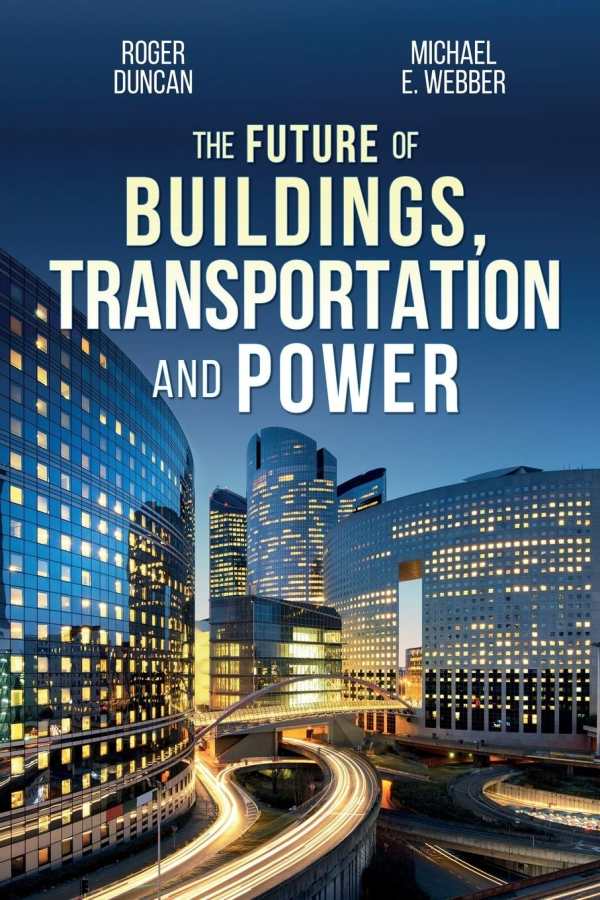The Future of Buildings, Transportation and Power
The Future of Buildings, Transportation and Power is a timely consideration of the energy sector that predicts future trends that will help in combating climate change.
Roger Duncan and Michael E. Webber’s analysis of the energy industry, The Future of Buildings, Transportation and Power, makes predictions about the future of technologies that are used on a daily basis.
Examining potentialities for technological efficiency based on current industry trends, the book first projects that buildings will be more energy efficient in the future, as well as that they will be constructed faster and with lighter, recyclable materials; it suggests that smart technologies will allow inhabitants to interface with their homes and work spaces to make their days easier.
Similar projections are made for the transportation sector, for which the book envisions more electric and autonomous vehicles that communicate with each other to keep passengers safe. And power, it says, will come from more renewable energies, instead of coal and natural gas; it projects that solar and wind power will improve and grow cheaper.
These forecasts are the result of thorough investigations of trends and industry capabilities. They show how resources are attained, how much prices change over time, and which companies and individuals construct and use technology—all factors that influence the speed and success of shifts to renewable energies and “smart” buildings and cars. Duncan and Webber draw on their professional experiences throughout, but still admit that the future could diverge from their predictions. The book acknowledges that the coronavirus epidemic and recession may delay their projections.
The book is methodical about relaying information, providing definitions and explaining acronyms for academic and industry terms as they arise. It conveys complex information in approachable, lucid language. Its organization into three distinct parts makes its considerations of specific trends tidy; each section also makes room to analyze the interconnectedness of the three titular pillars of infrastructure.
Pertinent examples of technologies that are being developed by companies like Tesla and various architectural firms support the book’s pronouncements. They include smart windows that adjust light absorption and insulation based on the weather; the plausibility of a space elevator; and the potential for microgrids to provide consistent energy, even during power outages. These compelling future possibilities make the book as eye opening and intriguing as it is intelligent.
Vignettes begin each chapter, describing a character’s interactions with the future technologies discussed. These features help to humanize the book’s predictions, showing what they may look like in practice. Robust notes combine with a few charts and graphs to supplement the book’s assertions.
The Future of Buildings, Transportation and Power is a timely consideration of the energy sector that predicts future trends that will help in combating climate change.
Reviewed by
Aimee Jodoin
Disclosure: This article is not an endorsement, but a review. The publisher of this book provided free copies of the book and paid a small fee to have their book reviewed by a professional reviewer. Foreword Reviews and Clarion Reviews make no guarantee that the publisher will receive a positive review. Foreword Magazine, Inc. is disclosing this in accordance with the Federal Trade Commission’s 16 CFR, Part 255.

